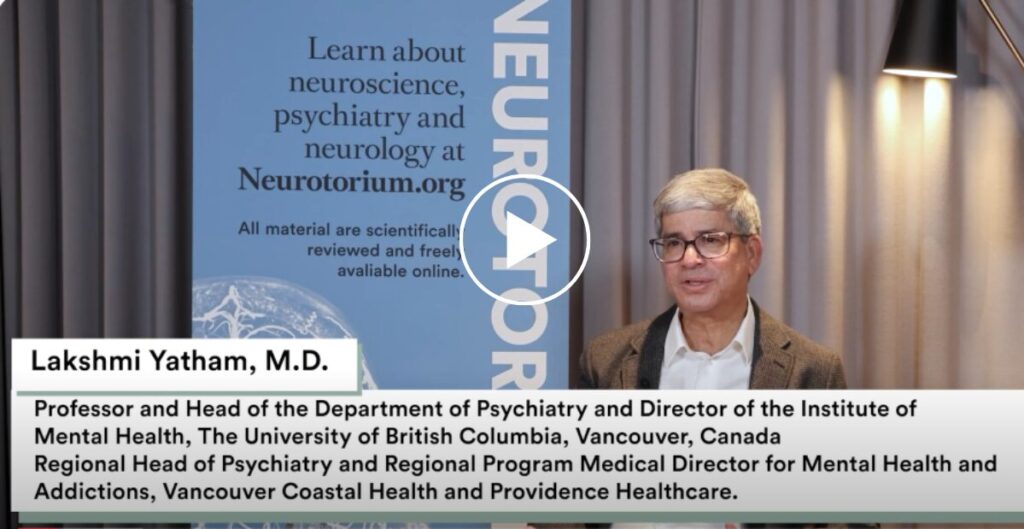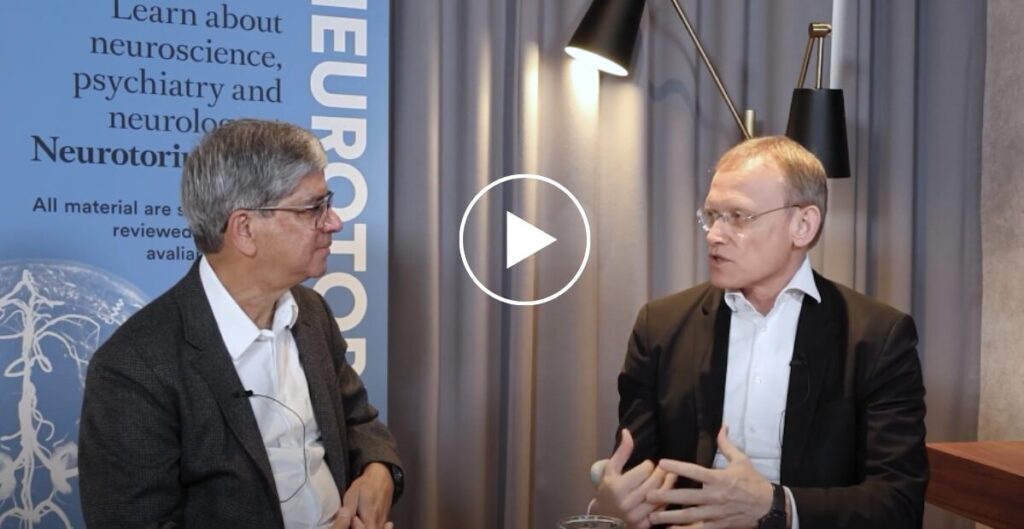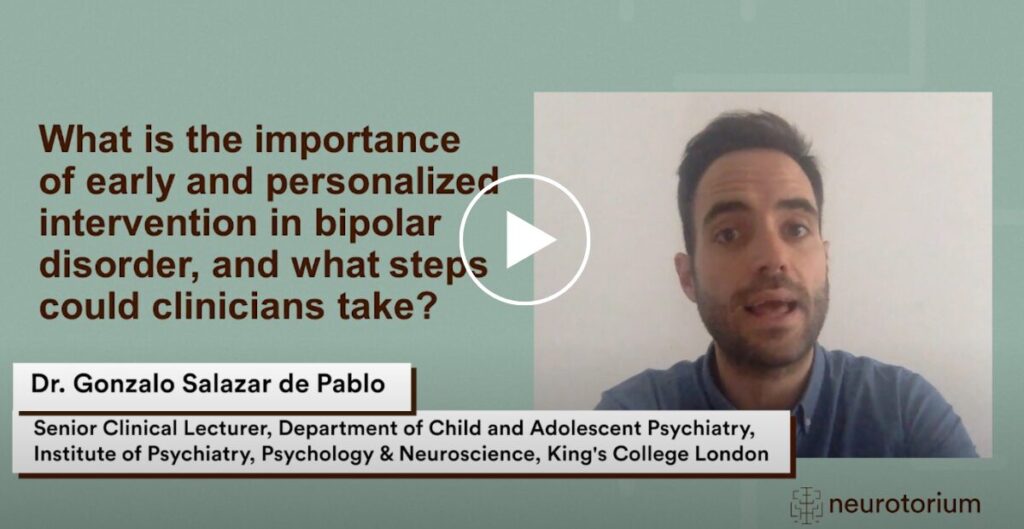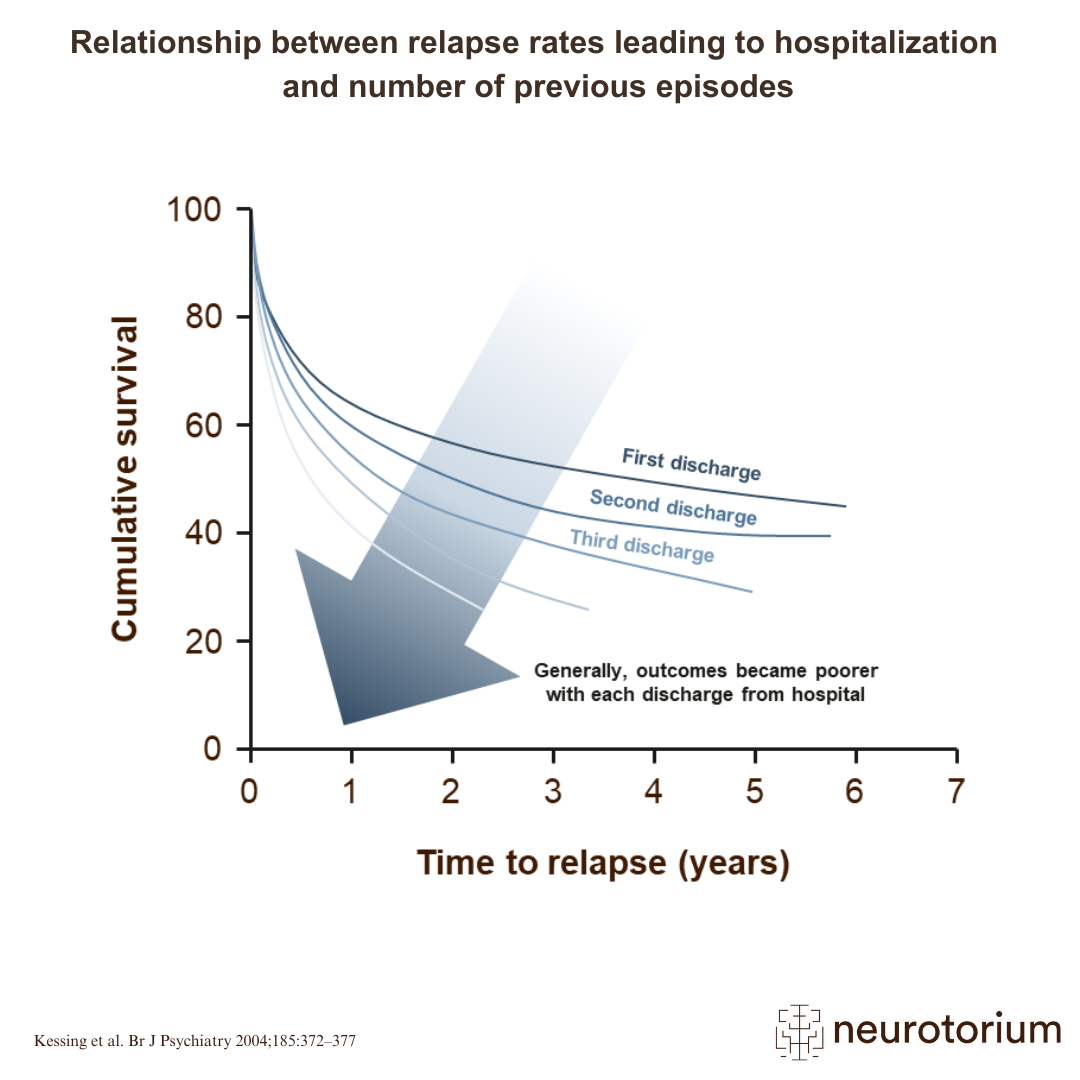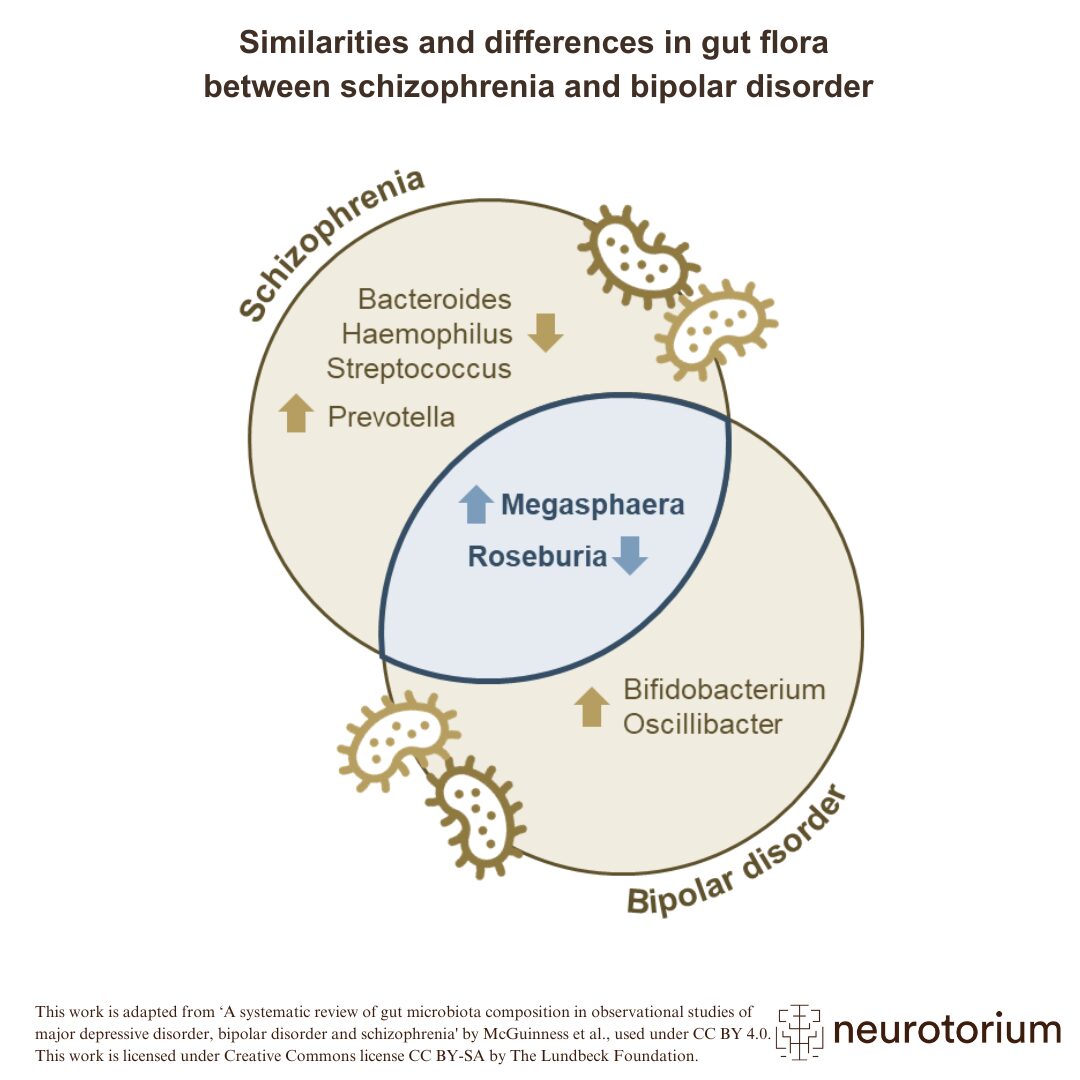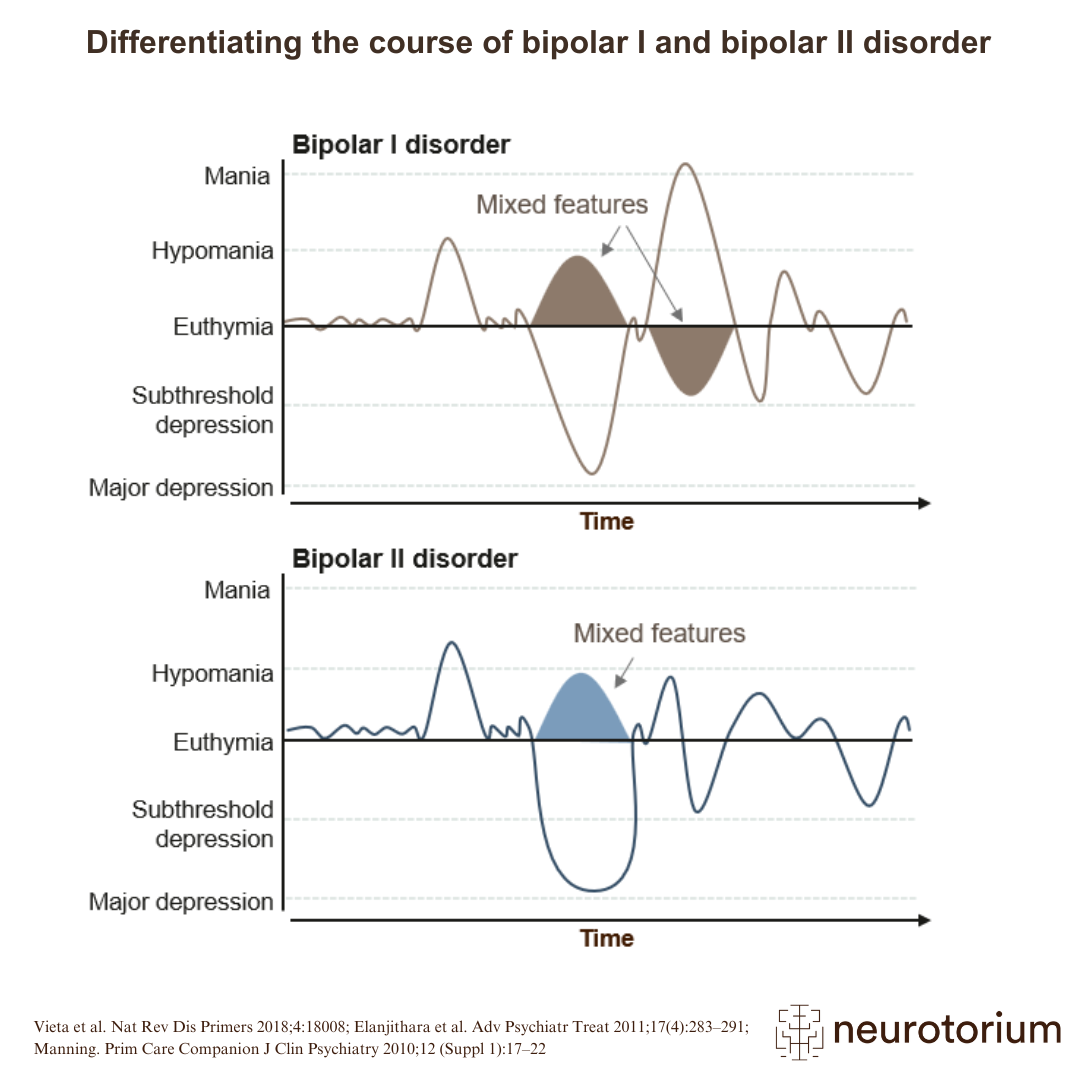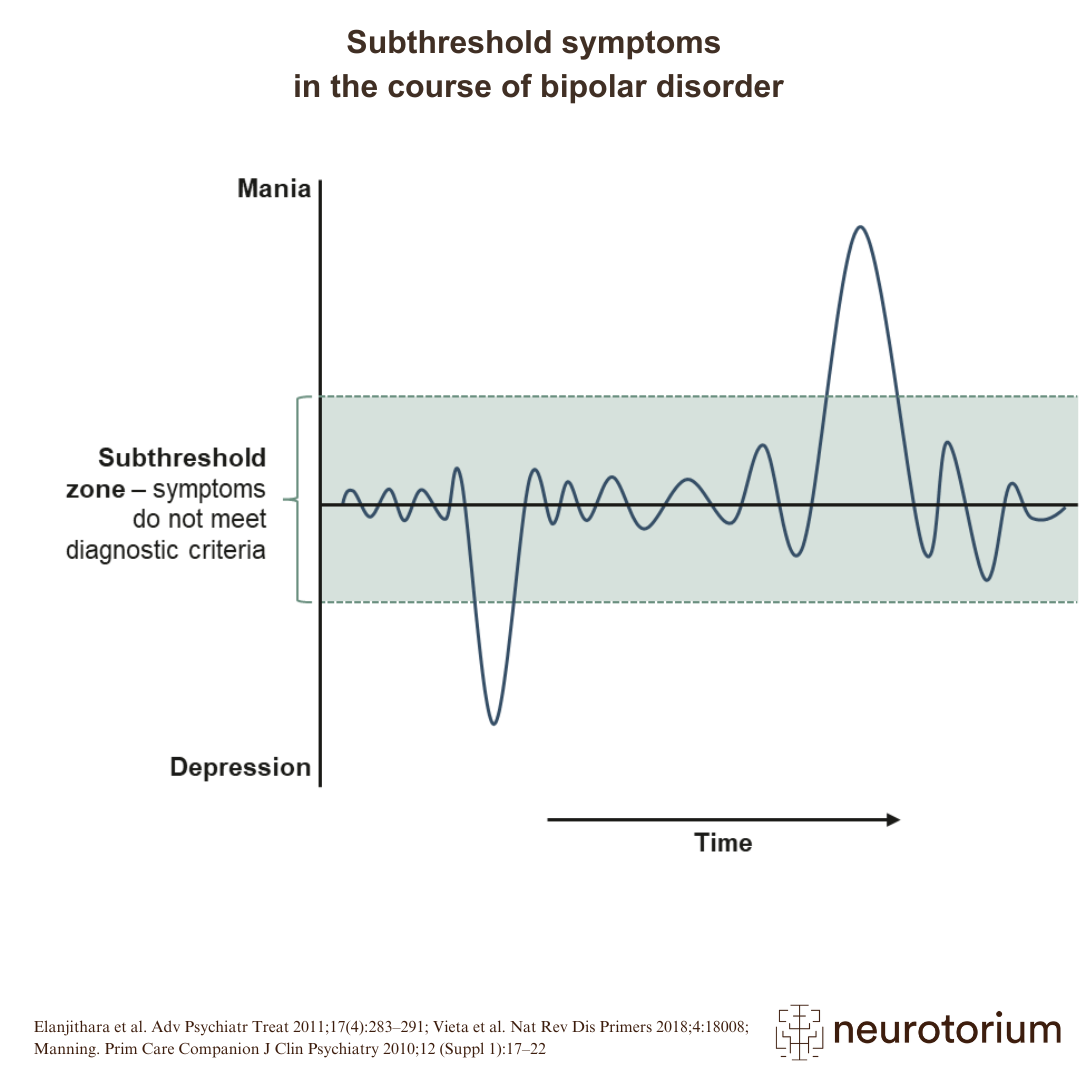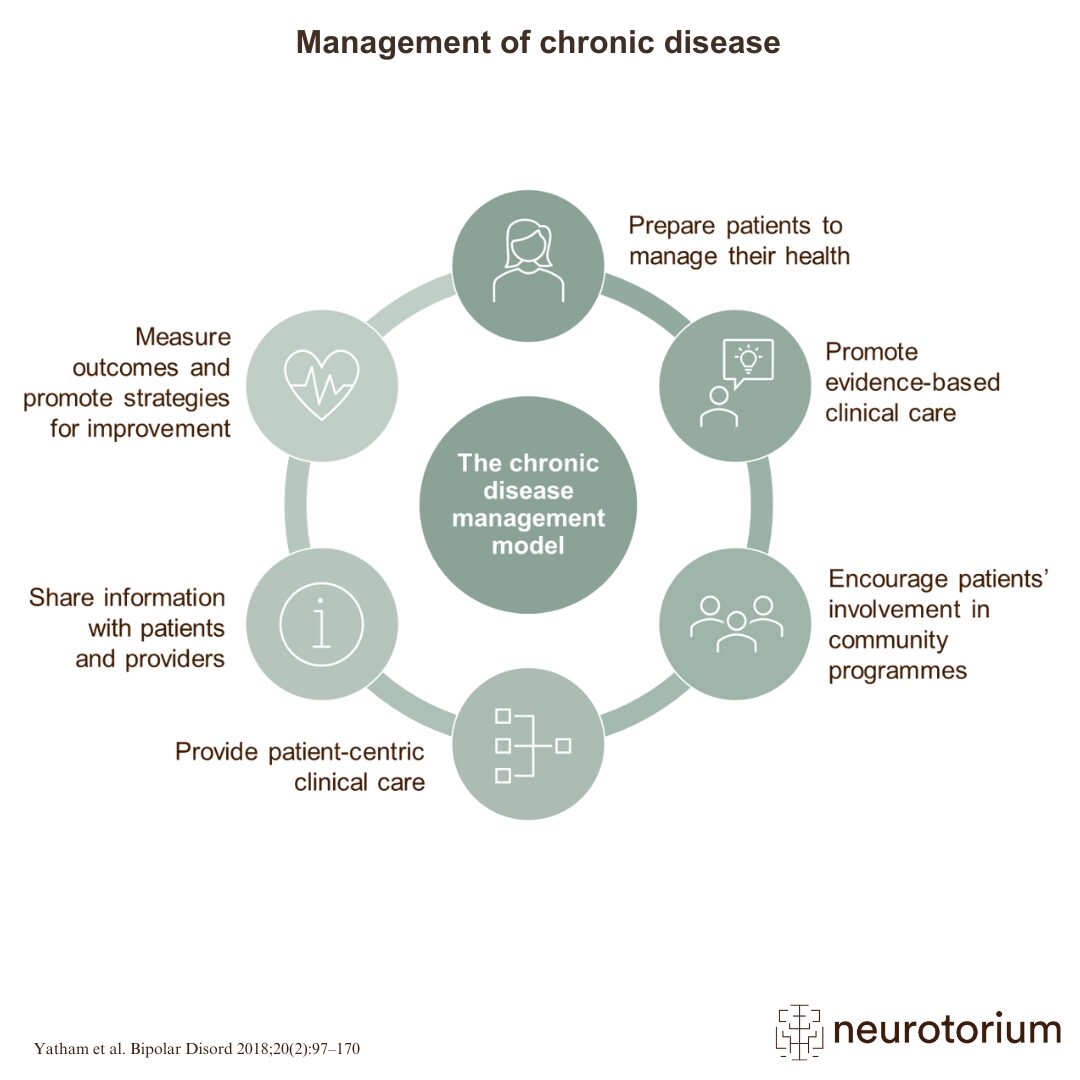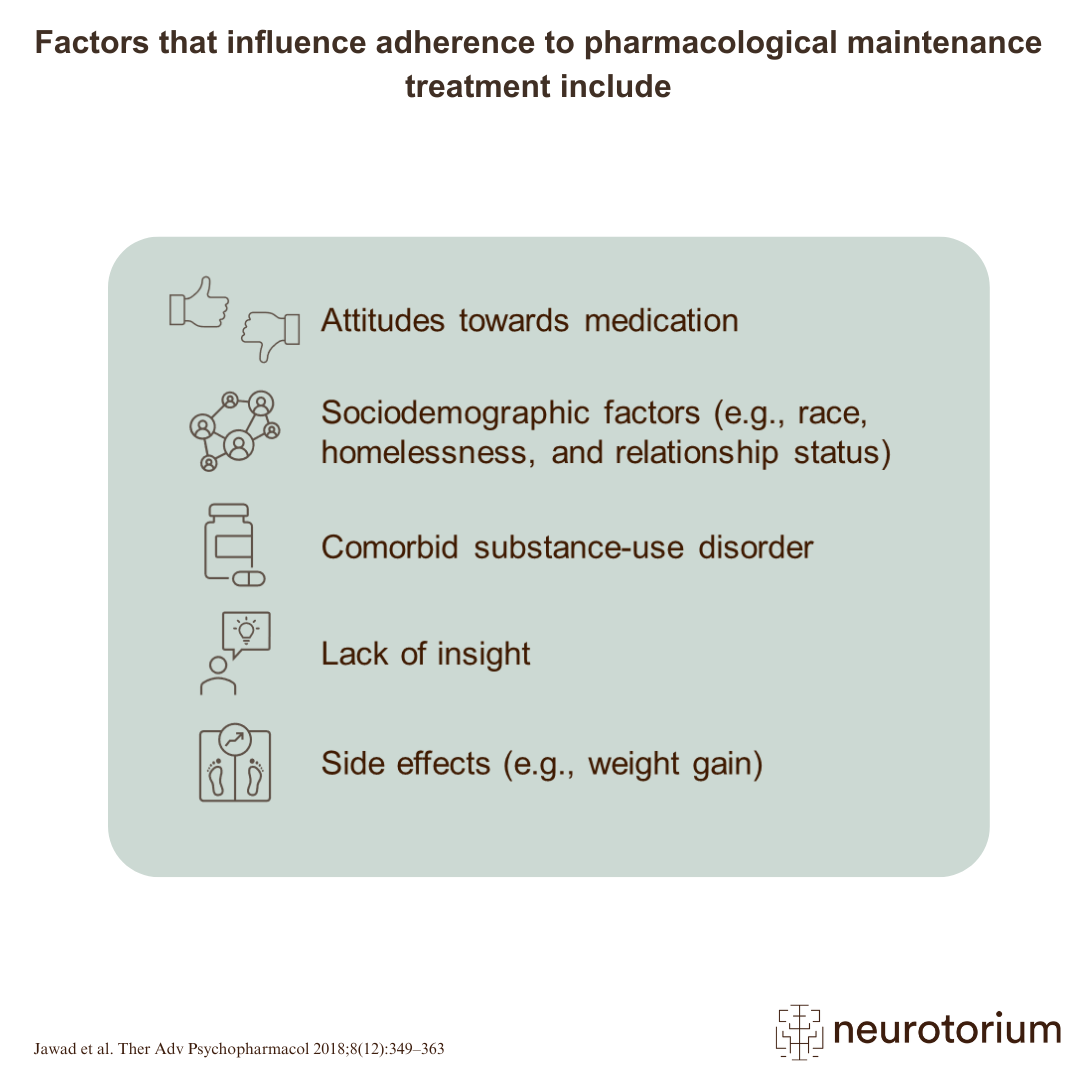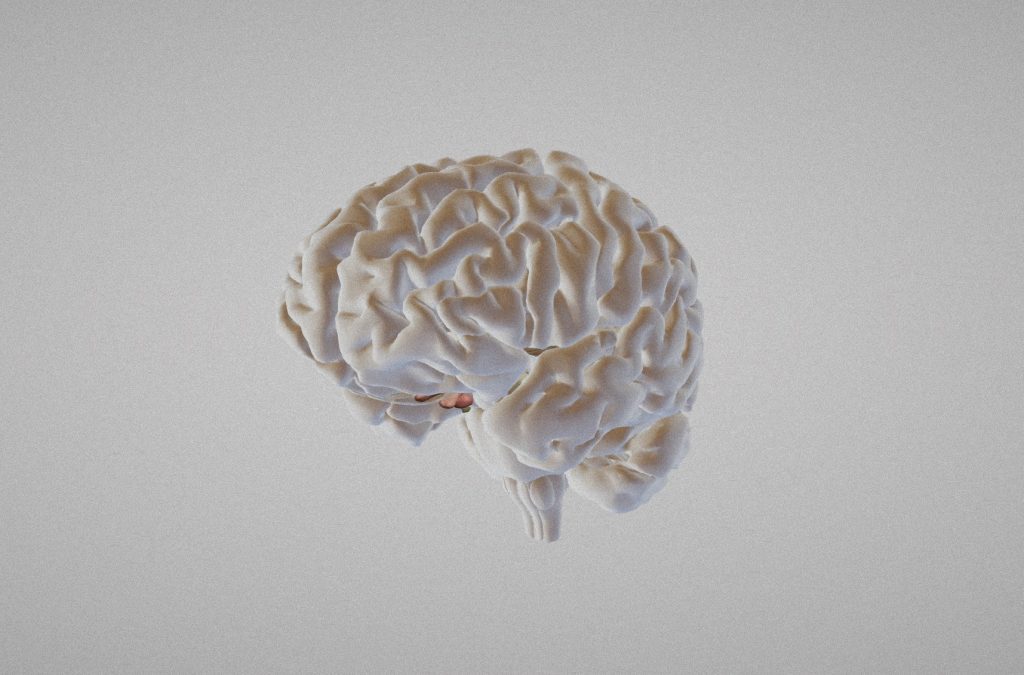Slide Decks on Bipolar Disorder
Our educational slide decks on Bipolar Disorder (BD) offer an introduction to BD as a heterogeneous disorder exemplified in the symptoms, comorbidities, and treatment response of individual patients. Scroll down to discover our slide decks and subscribe to our newsletter for updates on this and other state-of-the-art educational materials in the field of neurology and psychiatry.
Our slide decks are free to download and use.
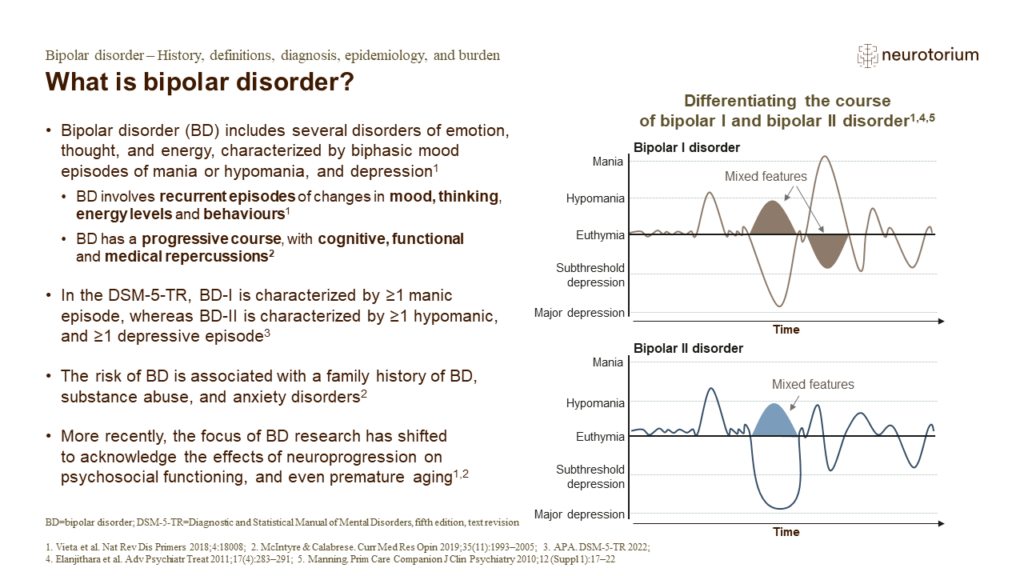
History, Definitions, Diagnosis, Epidemiology
This slide deck introduces BD, covering key topics such as the epidemiology and burden of the disease, diagnostic criteria, differential diagnosis, and tools to support the diagnosis and assessment of BD. Go to the slide deck.
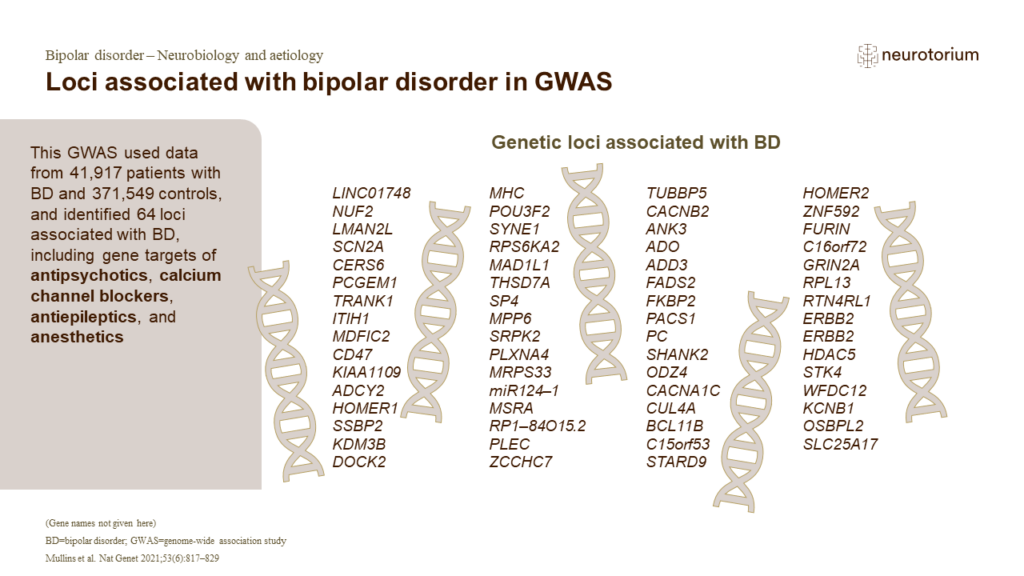
Neurobiology and Aetiology
This slide deck provides a comprehensive introduction to the neurobiology and etiology of BD, while exploring various models for studying the condition. Go to the slide deck.
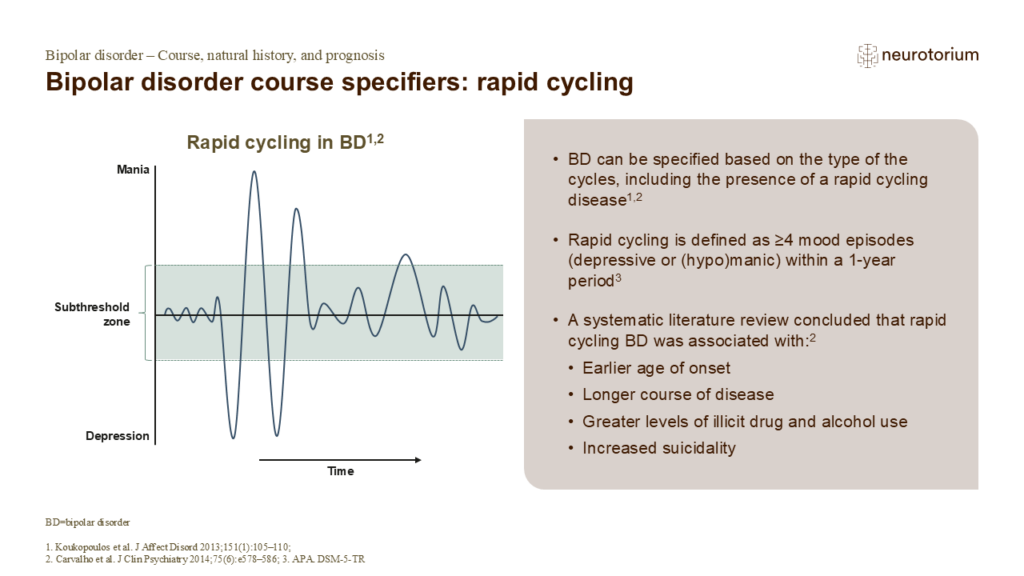
Course, Natural History, and Prognosis
This slide deck covers topics such as vulnerability and clinical high-risk (prodromal stages), mood episodes, progression (late stages), and prognosis, including clinical and functional recovery. Go to the slide deck.
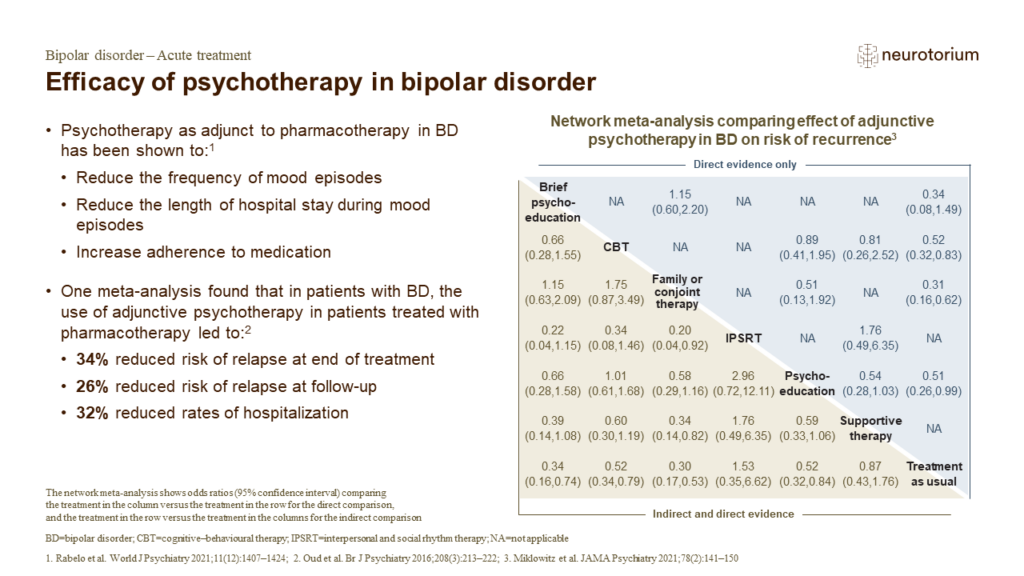
Acute Treatment
This slide deck presents a thorough overview of the acute treatment phase for BD, highlighting pharmacological, psychosocial, and other therapeutic interventions used to manage bipolar disorder effectively. Go to the slide deck.
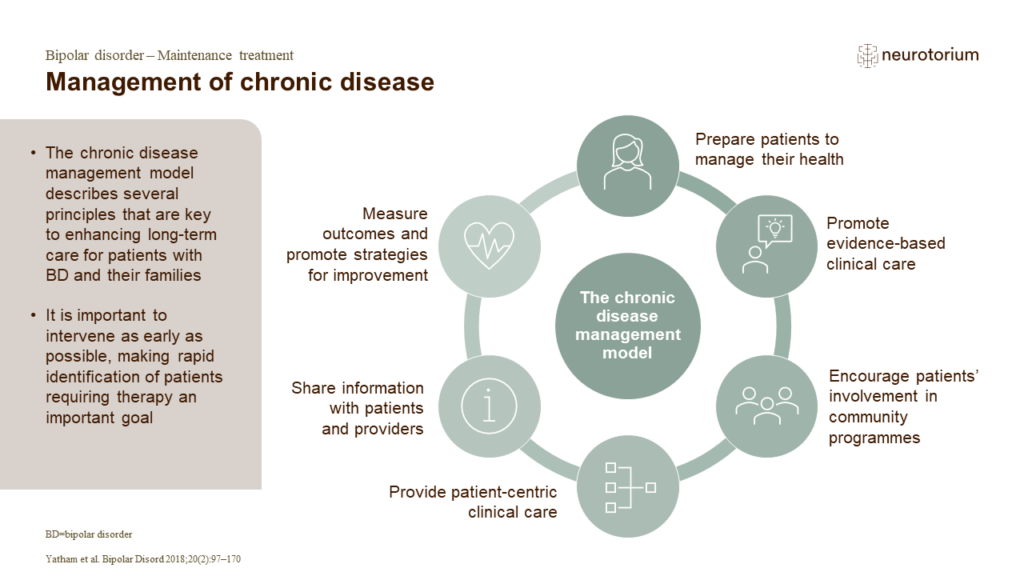
Maintenance Treatment
This slide deck offers an in-depth overview of maintenance strategies, including both psychopharmacological and psychological treatments. Go to the slide deck.
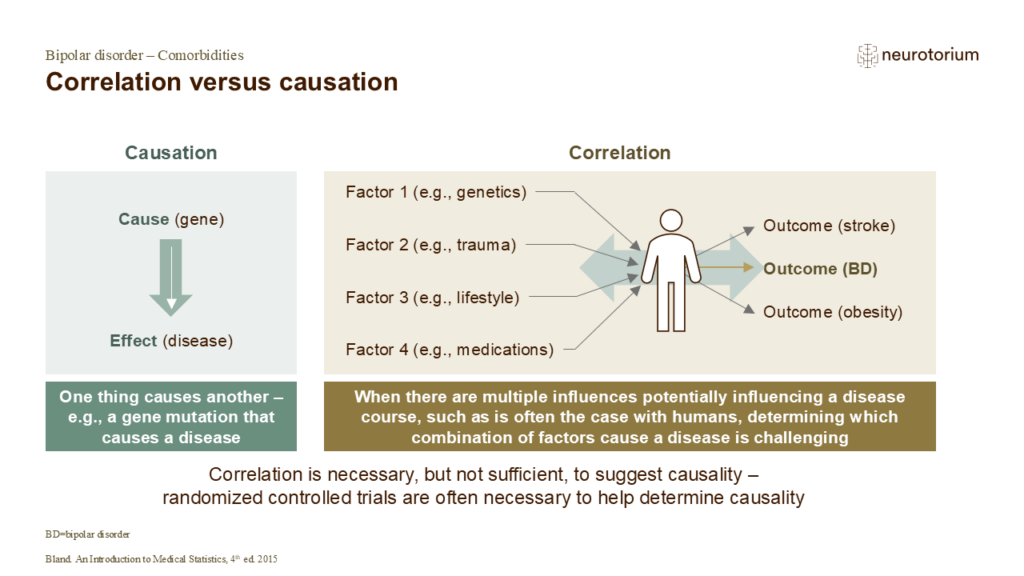
Comorbidities
This slide deck offers a comprehensive review of the psychiatric and medical comorbidities of BD and the management of patients with comorbidities. Go to the slide deck.
Articles on Bipolar Disorder
Bipolar disorder (BD) is a chronic and highly debilitating mental disorder characterized by recurrent mood episodes with inter-episode remission. Despite evidence for the efficacy of multimodal interventions, the majority of individuals with BD do not achieve and maintain full remission. We currently have the following article on BD, and with ongoing updates we expect to cover additional relevant issues.
- The Heterogeneity of Bipolar Disorder: From Clinical Observations to Precision PsychiatryBipolar disorder is highly heterogeneous in phenomenology, illness trajectory, and response to treatment.
Watch the Videos on Bipolar Disorder
Access our video series explaining complex topics, discussing current issues, and illustrating key concepts related to Bipolar Disorder (BD). Understand the role of clinicians in addressing unmet needs of BD and explore interventions including psychological interventions, early and personalized intervention, and the importance of maintenance treatment in BD.
Recent Findings and Future Outlook
In this video, Professor Dr. Lakshmi Yatham discusses the recent findings in Bipolar Disorder research and what the future holds for the diagnosis and treatment of Bipolar Disorder.
Unmet Medical Needs in Bipolar Disorder
In this video, Professor Dr. Christoph Correll discusses the complexities of bipolar disorder, shedding light on the real-world challenges in treatment, the critical role of clinicians, and the necessity of patient-centric approaches in psychiatry.
Diagnostic Challenges in Bipolar Disorder
In this video, Professors Lakshmi Yatham, MD., and Christoph Correll, MD. discuss the challenges of differentiating bipolar depression, unipolar depression, depression with mixed features, schizophrenia, and schizoaffective disorder.
Psychological Interventions in Bipolar Disorder Treatment
In this video, Dr. Emma Morton talks about the role of psychological interventions in bipolar disorder treatment, including family-focused therapy, cognitive behavioral therapy, and psychoeducation.
The Importance of Early and Personalized Intervention
Listen to Dr. Gonzalo Salazar de Pablo, MD, PhD, examining the importance of early intervention in bipolar disorder.
The Importance of Maintenance Treatment in Bipolar Disorder
In this video, Dr. Daniel Guinart, MD, PhD, discusses the importance of maintenance treatment in bipolar disorder.
Download Illustrations & Figures on Bipolar Disorder
The treatment of Bipolar Disorder (BD) involves acute treatment, which alleviates the immediate symptoms and is continued into maintenance treatment, which aims to prevent the recurrence of mood disturbances. Download and use our free images illustrating various aspects of BD. These are some of the selected images. You can access all the images on BD via the button below.
3D Brain Atlas
Several structural differences have been shown in neuroimaging studies of people with bipolar disorder. It appears to be becoming possible to separate brain abnormalities that appear to be present early in the disease – such as prefrontal cortex, striatum, and amygdala changes – from changes that appear to present later in the disease – such as those in the cerebellar vermis, and the lateral ventricles.




